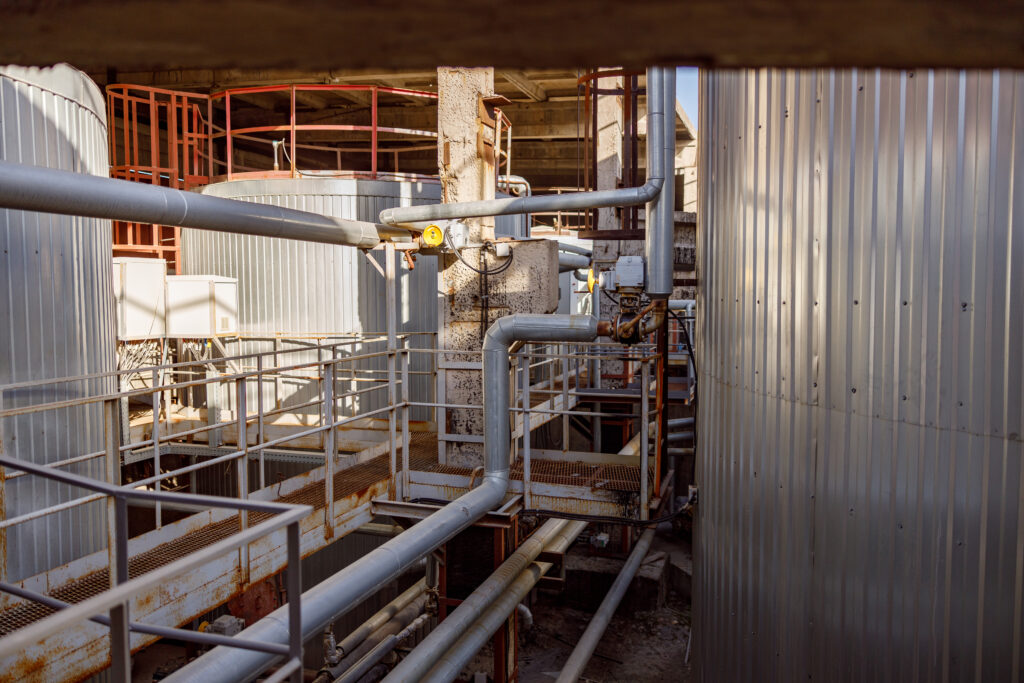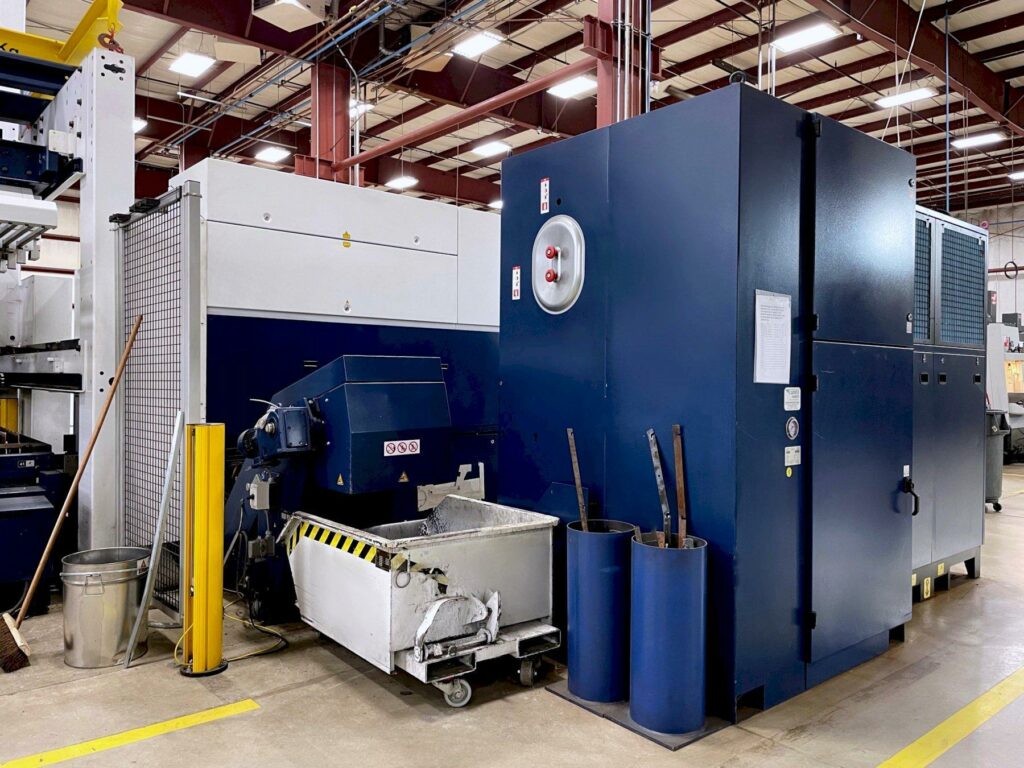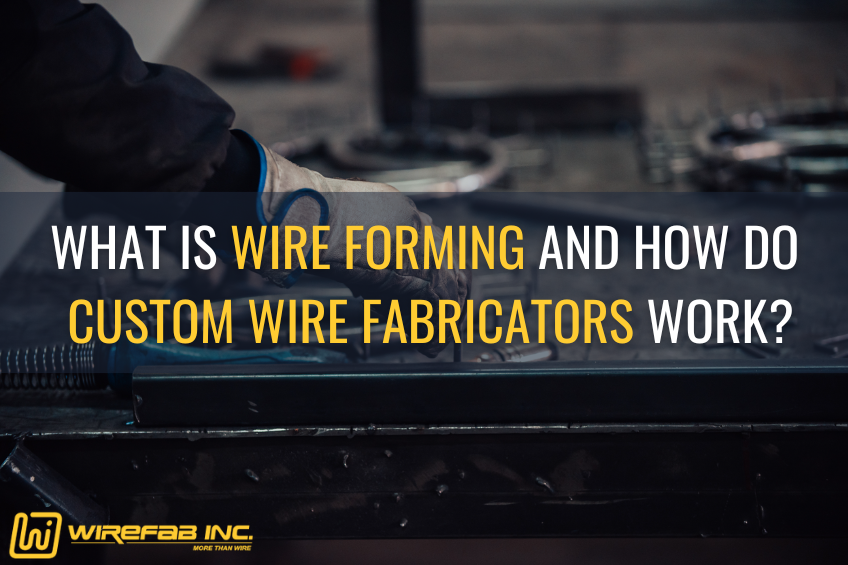What Is Wire Forming and How Do Custom Wire Fabricators Work?
Wire forming is a fundamental yet intricate process in manufacturing, essential for creating a myriad of specialized shapes and components. This blog explores the nuanced steps involved—from selecting the appropriate wire material and straightening it to the precise application of force that shapes the wire and any necessary post-processing techniques.
Whether you’re in automotive, medical, or any sector requiring custom wire forms, understanding these processes is crucial. Read on to discover how wire forming can be tailored to meet specific industrial needs, ensuring both functionality and durability in every product.
What You’ll Learn:
- What is wire forming?
- Custom wire fabricator methods
- Wire end options
- Types of wire forms
- Wire materials
- Products and applications
- The wire forming process
- Key takeaways
What Is Wire Forming?
Wire forming involves applying force to alter the contour of wire through techniques such as bending, swaging, piercing, chamfering, shearing, and more. This array of techniques can produce virtually any shape, form, or configuration desired. The process begins with coiled wire, which is first straightened and then formed.
Common wire forming metals include steel, brass, stainless steel, copper, aluminum, and various alloys. Wire diameters range from 0.5 mm to 6.5 mm, or 1/64th of an inch to a quarter inch, allowing for the production of both 2D and 3D wire forms.
Steel Wire Products
Bending wire manufacturers use a variety of equipment for wire forming, ranging from manual crafting to advanced CNC programmable machines. The process also incorporates options for coating and protecting the final products, making them suitable for use in harsh conditions.
What Methods Do Custom Wire Fabricators Use?
Manufacturers use various types of equipment for wire forming, which may operate manually or automatically. Manual machines require operators to use physical force or to load electronic machines manually. Automatic machines, on the other hand, feature advanced computer numerically controlled (CNC) programming that enables them to complete production without manual input.

The Drawing Method
The wire-forming process starts with the drawing method, where manufacturers pull wire through a funnel-shaped die until it achieves the desired dimensions. As the wire passes through the die or series of dies, the pressure exerted by the die’s sides reduces the wire’s diameter while increasing its hardness and length.
The Drawing Process
- Install the Drawplate: Securely install the drawplate to provide necessary leverage, using drawbenches, often specially designed for this purpose.
- Tapering: Taper one to two inches (2.5-5 cm) of the wire’s end to facilitate its entry into the die.
- Annealing: Anneal the wire before drawing to prevent breakage. Typically, after annealing, the wire undergoes pickling to eliminate any oxidation.
- Lubrication: Apply one of several possible lubricants to ease the wire’s movement through the die.
- Pull Through: Insert the tapered end of the wire into the unmarked side of the drawplate and pull it through slowly.
Manual Wire Forming
The traditional method involves manually operated machines that use a hand lever and spindle. These manual machines, whether drawn or rotary die types, incorporate gears that amplify the bending force applied.
Coil Wire Forming
This method involves winding wire around a metal blank, commonly used in making electrical coils where conductive wire wraps around a ferromagnetic core. Coil winding varies; electrical coils require precise winding compared to springs, sometimes necessitating multiple windings.
Roll Wire Forming
Roll forming produces reliably flat, round, and various other wire shapes. This method can create undercuts, knurls, pointing, chamfers, grooves, surface finishes, collars, and threads. The strength of roll-formed wire parts is enhanced through hardening, rounding edges, and prefinishing.
Bending Wire Forming
This process shapes wire into limitless configurations suitable for any application, handling wire diameters from 0.016 inches to 0.635 inches (0.4 mm to 16 mm). With bending occurring before cutting, the process produces no scrap or waste and requires no secondary finishing.
Fourslide Wire Forming
Fourslide forming, akin to horizontal stamping but with added cams, involves shafts, an electric motor, a die, a press, and sliding tools. The four sliding tools simultaneously shape the wire from four directions, with cams controlling their movement, allowing for both vertical and horizontal actions. This method, offering an efficient alternative to conventional stamping, excels in creating complex, smaller forms by manipulating metal strips from multiple directions at once.
Hydraulic Wire Forming
Hydraulic motors power the shaping rollers in these machines, with a servo motor and CNC programming setting the desired configuration. Completed wire shapes are automatically ejected after forming.
Pneumatic Wire Forming
In this process, the wire passes through a straightening machine, forms into the required shape, and is cut to length pneumatically.
CNC Wire Bending
CNC wire bending machines, either pneumatic or hydraulic, offer efficient, fast production. They can bend rebar up to 180 degrees using either single or double wire and straighten the bar before bending. CNC machines are renowned for their precision, cutting wire to exact dimensions, and are ideal for low-volume production or prototyping. These machines handle various wire types, including music, hard drawn, basic or coated metals, 300 series stainless steel, brass, and beryllium copper, accommodating wire diameters from 0.008 inches to 0.250 inches (0.0203 mm to 6.35 mm).
Find the right wire-forming capabilities for your next manufacturing project.
What Are the Different Wire End Options?
Understanding the variety of wire ends and interior geometries is crucial for selecting the right type of custom wire form for specific applications. This section delves into the different finishes that bending wire manufacturers use for functionality, safety, and aesthetic appeal. From precisely cut machine ends to complex laser-etched shapes, this section covers how these techniques contribute to versatility and performance.
Machine Cut End
Custom wire fabricators will precisely cut wire ends to minimize burrs. The finished wire can have ends cut at a quill or an angle, either with a single angle or angles on both sides.
Chamfered End
Chamfered ends feature a smooth, flat slope that helps eliminate sharp edges, enhancing safety and handling.
Winging
The winging or swaging cut is achieved by positioning the wire end in a die that molds it into a wing-like shape.
Pierced Swaging
In pierced swaging, the wire is not only shaped into a swaged form but also features a centrally located hole, adding to its functionality and aesthetic.
Custom Shaped Hole
Custom-shaped holes are created by cutting a hole into the wire end after it has been shaped, using a die specifically designed to puncture and form the desired hole.
Chisel Point and Turned End
This method uses dies to create a jagged end by cutting the wire diagonally, often used for specialized applications.
Ball End
A lathe can meticulously shape the end of the wire into a ball, providing a smooth, rounded finish.
Groove
Similar to forming a ball end, the groove end process involves cutting a groove into the wire end, adding distinct features to the wire.
Cold Heading
During cold heading, the wire end undergoes multiple impacts to either flatten or round it, resulting in various shapes such as button, carriage, or collar headings, providing versatility in application.

What Types of Wire Forms Do Fabricators Make?
The variety of wire shapes, configurations, and forms is limitless, with new designs constantly emerging. Wire forming can produce anything from complex, intricate three-dimensional designs to simple hooks and springs integral to many everyday objects.
Hose Clamps
Wire hose clamps utilize heavy wire bent into a U shape and formed into a ring, with one wire end overlapping the other. Users can separate the bent ends to tighten the clamp around a hose, providing uniform pressure to prevent leaks. Conversely, bringing the ends together loosens the clamp.
J Hooks
J hooks come in various forms, including the common fishhook. They often feature a protective coating and have notches for easy hanging. Double J hooks can support substantial loads when attached to a strap.
Linchpins
Linchpins secure wheels on axles and are made from materials like aluminum, zinc, brass, and stainless steel wire fabrication.
R Clips
Also known as R-clips, these fasteners are shaped like the letter ‘R’ and secure the ends of axles or rods. The long, straight segment passes through a hole at the end of the shaft, while the curved part snugly fits over the shaft. The end of the clip is bent upward to facilitate easy insertion.
S Hooks
S hooks have both ends bent into an S shape and are commonly used for hanging storage or organizing cables, hoses, and cords for safety.
Springs
Springs are the most ubiquitous wire forms, consisting of coils wound tightly to meet specific tension requirements. The design of a spring varies based on its intended use.
Threaded Wire Forms
The wire form threading process involves rolling a metal rod through threading dies to create durable threads quickly. This process contrasts with cut threading, where metal is removed to create threads, accommodating a broader range of sizes and designs.
Utility Hooks
Utility hooks combine a threaded end and a hook for easy installation and require multiple bends during manufacturing, including offset bends and a final bend that connects ends across the loop.
Wire Baskets
Wire baskets are crafted from welded wire mesh for bulk storage and may feature a rust-resistant finish. Their open mesh design provides strength, visibility, inventory control, and forklift access, making them indispensable in production settings.
Wire Displays
These displays are an economical solution for product showcasing, made from various metals and available in numerous finishes like coating, plating, or painting after forming.
Wire Guards
These guards range from hinged wire cages to protect sensitive equipment to open face guards that prevent unauthorized use of fire alarms or emergency stops. They are essential in environments with high traffic or heavy machinery.
Wire Screens
Wire screens consist of thin metal wires arranged in a grid and welded or woven at intersections, similar to cloth weaving. They serve as protective barriers to restrict access and manage material flow.
Z Clips
Z clips secure components in place by slipping over the item and anchoring at both ends, providing a robust, corrosion-resistant hold suitable for various applications, including securing electronic computer components.
Save time and money on all of your wire-bending needs!
What Sort of Materials Do Wire Fabricators Use?
Wire forming can utilize a diverse array of metals, including aluminum, copper, steel, brass, and various stainless steel grades, such as 304, 316, and 434, alongside numerous types of alloys. Some bending wire manufacturers rely on robotic welding to facilitate these finished products.
Bright Basic Wire (BBW)
Bright basic wire is a low-carbon steel wire known for its polished finish. This wire is cold drawn to enhance its tensile strength and mechanical properties, making it suitable for bending, straightening, welding, and finishing with coatings such as epoxy, plastic, galvanized, or powder. Commonly used grades for wire forming include 1008C and 1018C.
Galvanized Wire
Galvanized wire, made from carbon steel, receives a zinc coating through electroplating or hot dipping, making it rust-resistant and exceptionally strong across various gauges. During hot dipping, the wire is immersed in a zinc bath, and upon removal, it reacts with oxygen to bind the zinc to the steel, enhancing its durability.
Stainless Steel 304
Stainless steel grade 304 offers high corrosion resistance with a tensile strength of 621 MPa, making it suitable for use under mild corrosive conditions or where heavy loads are handled. It remains durable at temperatures exceeding 1500° F (815.5° C) but less than 2500° F (1371° C) and is noteworthy for being non-magnetic.
Stainless Steel 316
Grade 316 stainless steel is superior in corrosion resistance, particularly against chlorides, with a tensile strength of 579 MPa. It is ideal for extremely heavy loads and performs well in temperatures up to 1400° F (760° C). Its resistance to harsh, acidic environments makes it invaluable.
Stainless Steel 434
Grade 434 stainless steel is a ferritic alloy without nickel, making it less costly and suitable for producing industrial baskets. It excels in resistance to oxidation and corrosion and is useful up to temperatures of 1500° F (815.5° C).
Brass Wire
Brass, an alloy of copper and zinc, carries copper’s beneficial properties, such as electrical and heat conductivity. Plus, it’s a lot stronger than copper, expanding its application range in wire forming. Additional elements like antimony and tin can be added to enhance its mechanical properties.
Copper Wire
Copper is highly conducive to electricity and heat, with a distinctive reddish-orange color. Its flexibility makes it ideal for wire forming, and although it resists rust, it can develop a green patina over time when exposed to air.
Aluminum Wire
Aluminum, a soft, non-magnetic metal, is abundant and lightweight, with excellent corrosion resistance. For wire forming, it is often alloyed with elements like copper and magnesium to enhance its strength and prevent deformation.
Steel Wire
Steel, an iron-carbon alloy, is chosen for its high tensile strength and cost-effectiveness. Carbon and other alloying elements improve hardness, strength, and overall durability, making steel a manufacturing staple.

What Kind of Products Do Wire Forming Companies Manufacture?
Wire forming is integral to industries that rely on wire components and parts. Its versatility allows for the creation of both standard shapes and specialized designs tailored to specific conditions, materials, or sheet metal engineering needs.
Medical Uses
In the medical field, components must be durable, smooth, and exceptionally clean. Stainless steel is the primary material used due to its ability to withstand high temperatures and repeated sterilizations. Its smooth surface helps protect medical workers from nicks, cuts, and punctures to gloves and garments.
Industrial Uses
Wire-formed baskets are crucial in industrial settings for the efficient, organized delivery of parts to production lines.
Automotive Uses
In the automotive sector, wire forms include wire springs, compression coils, and spiral springs for suspension systems. Torsion and tension springs are versatile and used in applications like swing-down tailgates, while conical springs are crucial in battery contact production.
Athletic Uses
Wire masks, designed to meet the standards of the National Operating Committee on Standards for Athletic Equipment (NOCSAE), offer protection in contact sports.
Telecommunications Uses
In telecommunications, smooth steel wire is utilized for guides and trays, facilitating easy cable installation, inspection, and upgrades. Routing rings attached to frames accommodate various wires, supported by trays, troughs, and hardware designed for straightforward cable management.
Retail Uses
Wire forming shines in retail with product display racks that are lightweight yet durable enough to showcase products effectively. These racks appear in high-traffic areas at point-of-sale locations or throughout stores.
Food Uses
The food industry demands compliance with stringent FDA regulations. Wire storage and processing racks meet these standards with heat resistance, corrosion resistance, and ease of sanitation.
Construction Uses
Wire forms are vital in construction for securing wires, supporting hooks, springs, and pins and creating wireframes and screens. They are used in both functional construction elements and as decorative features in guardrails and accents.
We have 300+ machines to meet your manufacturing quota.
What Does the Ideal Wire Forming Process Look Like?
The wire-forming process encompasses four essential steps crucial for producing a precise part or component. Custom wire fabricators will typically involve:
Wire Selection
The choice of wire—considering gauge, diameter, and material—is dictated by the initial CAD design. Durable materials like steel and stainless steel are preferred for components that require resilience and longevity. For less intensive applications, lighter wires such as aluminum and copper are suitable. The final product might include low, medium, and high carbon steel, stainless steel, aluminum, copper, brass, and diverse alloyed metals.
Wire Straightening
Wire typically comes in coils and must be straightened before a project can move forward. This step involves removing any stress deformities that have developed during storage. Rolling machines primarily function to straighten the wire. They eliminate uncontrolled irregularities that could compromise the final form.
Applying Force
You need machines with significant force to alter a wire’s shape into a desired form. Are you looking for high-volume production? You can achieve this outcome manually or through various automated equipment like CNC and four-slide machines. These tools utilize dies and cutting tools to create a broad range of shapes and configurations.
Finishing Wire Exterior
Finishing the wire may or may not be necessary, depending on the product’s design. In some instances, additional modifications such as cuts, grooves, heading, coining, swaging, and other post-production adjustments are required. A critical aspect of finishing is the removal and smoothing of any burrs and sharp edges. That way, you can guarantee the safety and quality of the final product.
Key Takeaways
Wire forming adjusts the contour of straightened wire to achieve specialized shapes or designs. This versatile process utilizes a variety of metals, including stainless steel, aluminum, copper, brass, and alloyed metals, catering to diverse manufacturing needs across industries such as automotive, medical equipment, food production, and shipping. From manual crafting to advanced CNC programmable machines, the equipment used in wire forming varies widely. New technology supports an ever-expanding array of wire forms driven by continuous development and evolving applications.
100% U.S.-Based Custom Sheet Metal Fabrication
We’re here to be your greatest resource in contract manufacturing. We conduct all of our stainless steel wire forming in the heart of New England. Plus, we’re ready to ship anywhere in the U.S.!
Wirefab Inc. has over 65 years of experience in custom sheet metal fabrication. Whether you need custom CNC machining, laser metal cutting, or material handling carts, we’re here to help. Above all, we’re always eager to solve our customers’ problems with a broad range of manufacturing capabilities. Contact us today to see how we can simplify your next project.
You can also follow us on Instagram to view our custom wire products!

